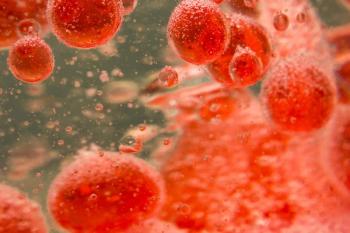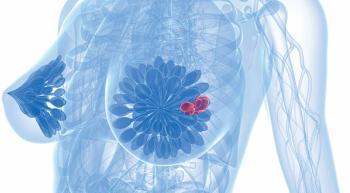
EGFRI-induced rash may be two-phase phenomenon
The skin eruptions that plague most patients on EGFR inhibitor therapy and disrupt treatment in some may occur in two recognizable stages, which could have implications for both research and treatment.
It's no surprise that blocking the epidermal growth factor receptor disrupts the integrity of the skin as well as the growth of cancer cells. It is, after all, an epidermal growth factor. A small study from oncologists in Israel suggests that the eruptions tend to occur in two different stages, hinting at a pathological distinction that may hold clues for both management and research.
Epidermal growth factor inhibitor (EGFRI) therapy may be less toxic than adverse reactions to many other forms of chemotherapy, but the skin reactions it causes lead one in ten patients to interrupt or even discontinue therapy. Thus it's important to know what to expect in order to treat these dermatological effects successfully and distinguish them from problems not related to cancer, according to dermatologist Mario LaCouture, MD, of Memorial Sloan-Kettering Cancer Center, who co-chairs the Skin Toxicity Study Group of the Multinational Association of Supportive Care in Cancer (MASCC).
The new report defines a late-stage skin problem that affects the trunk (not the face). Because every such case in the study was associated with Staphylococcus aureus infection, vigilance and hygiene may help to prevent it.
Early versus late rashes
The Israeli researchers cultured specimens from all 29 cases of papulopustular rash or peronychia that were referred to their clinic over the course of 20 months, among patients taking the EGFRI inhibitors cetuximab or erlotinib. Among the 24 patients who had papulopustular rash, they
All patients showed clear improvement in symptoms within a few days after beginning treatment with topical steroids, sometimes supplemented with antibiotics. About half of the early-phase eruptions and all 7 of the late-phase were positive for Staphylococcus aureus, according to the report, which urged taking cultures in every case to rule out bacterial infection.
Although skin reactions to EGFRI treatment for cancer are nearly universal, guidance for treating them has been based largely on small studies of this kind or even anecdotal reports. Finding the best treatment is important, not only because of the risk that these side effects will interfere with therapy but also for economic reasons. A recent study showed that the average cost of treatment is about $1,500 per patient and can amount to well more than $6,000 in some cases.
Toward evidence-based treatments
To encourage well-coordinated research, the MASCC Skin Toxicity Study Group has created standards for defining and grading these skin reactions. An EGFRI-specific quality-of-life was described at the latest ASCO annual meeting and is available on the Internet at
A
Newsletter
Stay up to date on recent advances in the multidisciplinary approach to cancer.

















































































